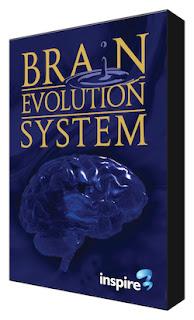I love to read about how other writers work.
And it’s not only how they write that I like to know, but where they write.
This includes what country they live in, the climate, who they live with and where they go to write.
And a common thing amongst successful writers is that they all have a designated space where they do most of their writing.
For many it’s actually a physically, detached space like a shed or a summer house. For others it’s a room in their house or even just a desk in a corner.
Some writers prefer to write away from home.
Jeffrey Archer, the British novelist and politician, wrote all his books while away on holiday for a few weeks at a time.
Maya Angelou rented a hotel room to write in and it was always the same room in the same hotel.
Rachel Aaron found she could increase her writing speed from 2,000 wph to 10,000 wph (words per hour) by going out and writing in a coffee shop and always in the afternoon.
Writing daily is a habit (if you let it become so) and having a designated writing place is like having a trigger to start writing, so that as soon as you get to your writing place, it puts you in the mood to write.
At home I write either at a table on the deck (if it’s nice weather, and it usually is) or at a desk in the annex room at the back of the house.
I also find I can write more when I’m away from home, either at the park or in the library.
If I stay home to write then my space must be distraction-free. This means no internet. So I write with a pad and pen which also makes my mind feel more creative. I then type up my work on my writing computer which is a Mac Book Air which is easy to carry and I use it only for writing.
This is so easy to do because where I live we typically have good weather all year round so sitting outside to work isn’t a problem. I can also sit in the library if it’s too hot or rainy.
And although there’s a lot of noise around me when I’m out, it’s not distracting because no one is wanting my attention and when I’m busy writing, no one disturbs me.
But no writing can get done until I actually sit down and get to work.
And having a regular place to write makes it easier because I know where I have to go and my mind switches to work mode as soon as I sit down.
Stephen King in his book, On Writing, espouses having your own place to write, preferably and room with a door that you can shut.
But usually, for me anyway, as long as it’s my usual writing space, it works.
And it’s not only how they write that I like to know, but where they write.
This includes what country they live in, the climate, who they live with and where they go to write.
And a common thing amongst successful writers is that they all have a designated space where they do most of their writing.
For many it’s actually a physically, detached space like a shed or a summer house. For others it’s a room in their house or even just a desk in a corner.
Some writers prefer to write away from home.
Jeffrey Archer, the British novelist and politician, wrote all his books while away on holiday for a few weeks at a time.
Maya Angelou rented a hotel room to write in and it was always the same room in the same hotel.
Rachel Aaron found she could increase her writing speed from 2,000 wph to 10,000 wph (words per hour) by going out and writing in a coffee shop and always in the afternoon.
Writing daily is a habit (if you let it become so) and having a designated writing place is like having a trigger to start writing, so that as soon as you get to your writing place, it puts you in the mood to write.
At home I write either at a table on the deck (if it’s nice weather, and it usually is) or at a desk in the annex room at the back of the house.
I also find I can write more when I’m away from home, either at the park or in the library.
Writing at Home
Writing Away From Home
And although there’s a lot of noise around me when I’m out, it’s not distracting because no one is wanting my attention and when I’m busy writing, no one disturbs me.
But no writing can get done until I actually sit down and get to work.
And having a regular place to write makes it easier because I know where I have to go and my mind switches to work mode as soon as I sit down.
Stephen King in his book, On Writing, espouses having your own place to write, preferably and room with a door that you can shut.
But usually, for me anyway, as long as it’s my usual writing space, it works.
Get a Free MP3 Download
by
Clicking the Image Above




